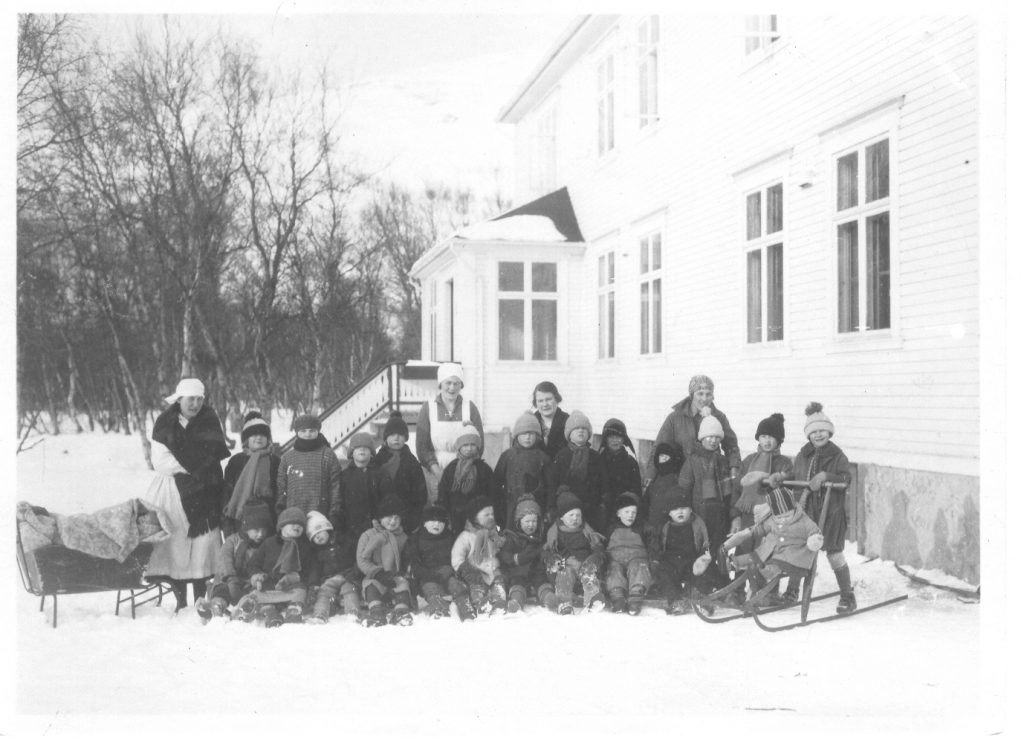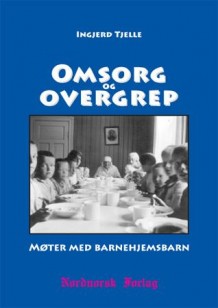(THIS ARTICLE IS MACHINE TRANSLATED by Google from Norwegian)
Within racial hygiene one had a theory of "pauperism". It meant that criminals, prostitution, bad habits and so on were hereditary, and that this problem should be combated by sterilizing those who were carrying this substance. This was, for example, the reason why Scharffenberg wanted to sterilize tattoos.
Christians who worked in different mission associations looked at it differently; they felt that the environmental factor was more important, and that if you had children early enough away from poor homes, food, clothing and discipline, of course together with Christian preaching, could save children from a bad life.
Therefore, there were many mission associations that started orphanages early in the 1900 century. Journalist Ingjerd Tjelle's book is about such orphanages in Finnmark county. She became interested in this theme when the "Korsfjord case" became known in 2001. She writes: "Extensive abuse was alleged by about a dozen former orphanage children to have happened at the Korsfjord orphanage at Alta at the beginning of the 1960 century." Eventually, similar reports emerged from Oslo, Bergen and Stavanger.

Forced Christianity
Tjelle reviews the history and background of the orphanages that were operating in Finnmark approximately until the 1980 century. It is a story of forced Christianity and cadaver discipline. Although the children were often better off than the rural population when it came to food and clothing, everyday life was more or less drained of joy and filled with physical and mental abuse, as well as periods of enormous sexual abuse. The scary and tragic thing about these stories is how the organizations' Christian credentials were used to cover and ignore all messages of, or evidence of, abuse. Victims were told that those who had prayed for them would receive God's forgiveness. Furthermore, it was important for the orphanages to appear safe and well-run externally. The municipalities where the orphanages were located were also interested in this, therefore checks were never carried out without notice on their part. The Christian orphanages took care of an important and costly task that would otherwise have fallen heavily on the municipality's budget.
mishandling
The second half of the book consists of interviews with now grown-ups who have been severely reduced because of mistreatment in orphanages. But there are also interviews with orphanage children who have nothing to complain about. Both parties agree that whether or not the abuse was committed was highly personal, both in terms of abuser and victim.
Ola Ødegaard in the association Justice for the losers, who himself was sexually abused when he was a child, has said that such institutions could serve as pure paradise for pedophiles and sadists. The chance of being discovered was small, and the chance that a discovery would have consequences was even less. The perpetrators chose the victims quite early and had a love for those who had little family and network visits.
An important point that emerges during the book is how important it is to have one concepts about what sex abuse of children is for something. Despite focusing on this in recent years, it seems that it was more widespread before the media focus came. But because those who did not have such pulls, and only worked more or less idealistically, could not imagine that such things actually happened right under their noses, it continued year after year.

Heartbreaking scenes
I will not list details of what happened. Use your imagination. But the most heartbreaking scene is the following: Anne Marie Furu was at the Bethany orphanage in Alta. "She once came across a task in a booklet from Karl A. Høyer's stomatol factory in Oslo, where five errors were to be found. Anne found the errors, and received both an envelope and a stamp and sent the solution away at the same time as she wrote that she was an orphanage child. " Then a while passed, and a letter arrived: «- At first I thought I had won, but it turned out that the magazine was many years old and that the competition winner had been chosen for a long time, but I still received an invitation to the factory and a lot of comics. But I was not allowed to read these because, according to the management, it was a sin. "
Ingjerd Tjelle gives a thorough and balanced presentation of this recently revealed horror field. This is journalism at its best, and quite refreshing at a time when almost everyone is going to put such stories into the power theories of Foucault. It is not necessary every time. This is one of the most important books published in Norway in 2005.






